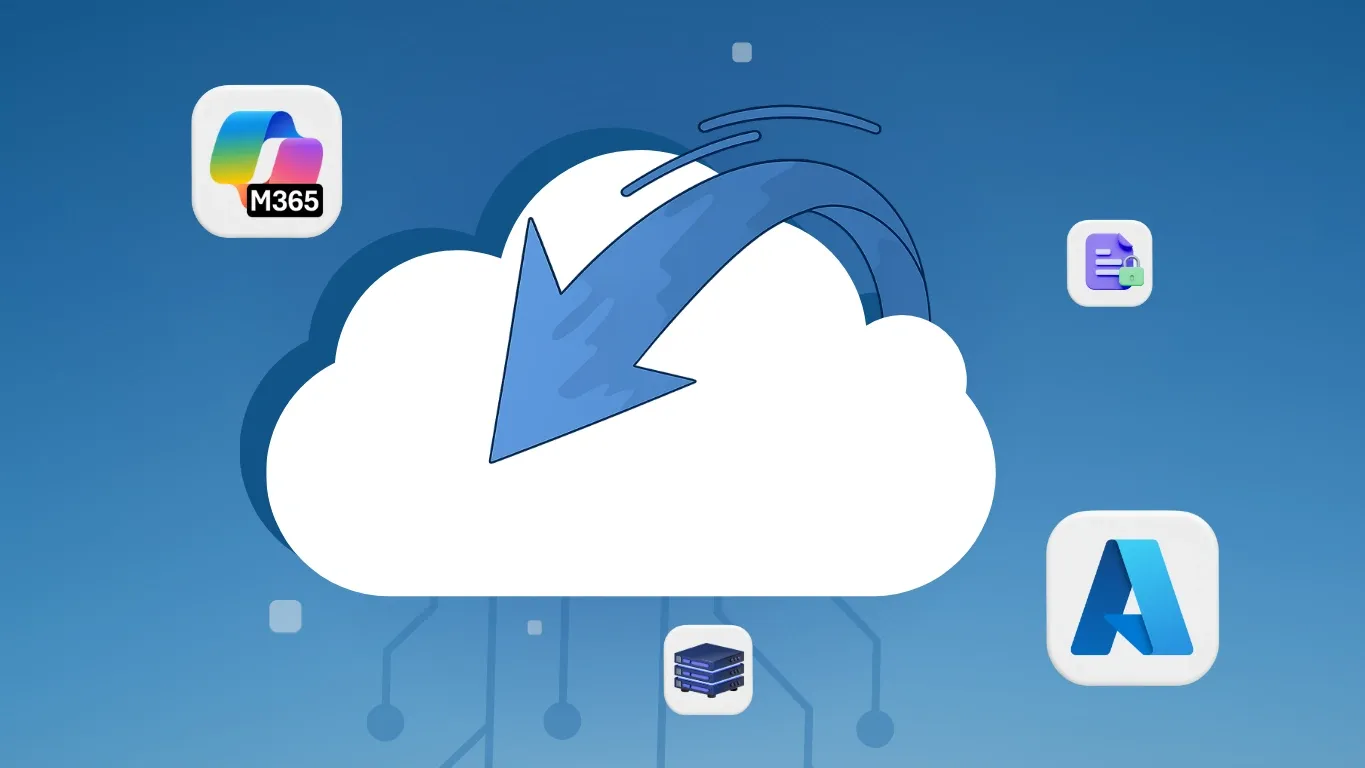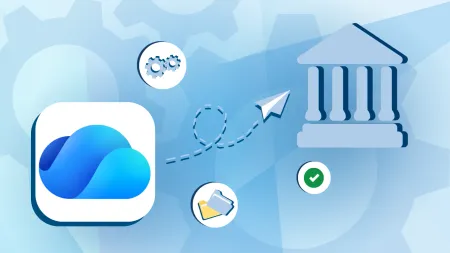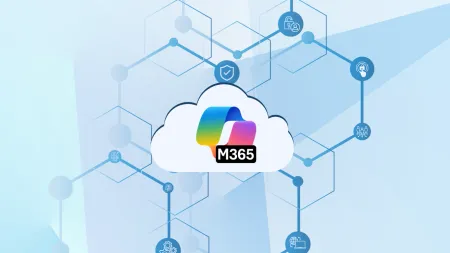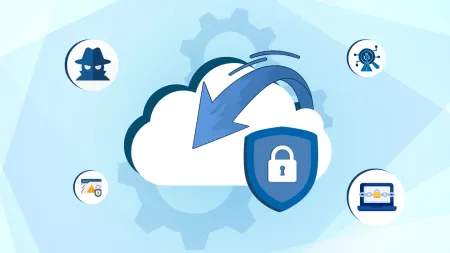What Is Cloud Backup for Microsoft 365 and Azure?
Learn what cloud backup means for Microsoft 365 and Azure, why native retention isn't enough, and how secure backups protect your critical data.

This is Post #1 of our Cloud Backup for Microsoft 365 and Azure Series
Continue your migration journey with the next posts in the series:

Access is everything when it comes to getting work done today. Key stakeholders must have the opportunity to access the files and documents that they need to get their work done in the most effective way possible. This is why cloud storage is such a critical component of the way that work gets accomplished today. Box Blogs explains:
Cloud storage is a service that allows you to save, access, and manage digital data through online networks rather than on a local device or physical server. It’s a virtual space where you can upload and access files like documents, images, and videos from any device using cloud-based servers.
Therefore, anyone with the proper level of access can tap into the files and resources that they require to get their work done effectively. That said, cloud backup can look different on different operating systems, and it is important to note what those differences might look like. In particular, we want to examine how these differences might crop up between the Microsoft 365 and Azure platforms.
Microsoft 365 Backup Needs
Far too many people fall into the trap of assuming that the default retention features built into their favorite platforms are enough to keep their data safe. Relying on them alone creates a false sense of security that can prevent you from takin the right steps to ensure real protection. While Microsoft 365 does have some built-in retention features, it is important to remember that it was never designed to be a comprehensive, long-term solution for retention and storage.
There are still plenty of reasons why you should tap into additional backup and retention resources, including:
-
Accidental Deletion of Data – Losing data by mistake is far more common than most realize. A single mishap can instantly wipe out valuable work and create serious setbacks for any organization.
-
Ransomware - Cybercriminals are getting smarter and more sophisticated, constantly looking for weak points to exploit and ransomware continues to be one of the most pressing risks. A successful attack can lock down critical infrastructure and disrupt operations in devastating ways.
-
Insider Threats - Not all risks come from the outside. The people with the most access to the data that you manage every day are the people that you employ. Therefore, they also pose the biggest risk for that data becoming exposed, and it is important to remember this when thinking about exactly where the biggest threats to your system really are.
Azure Backup Considerations
Microsoft 365 has certain backup requirements that every user ought to be mindful of and aware of. This is also true for Azure. Taking the time to understand the backup needs of Azure allows users protect their data more effectively than relying on default assumptions. In particular, one should consider some use cases for Azure Recovery Services Vault, a built-in tool that is designed to help keep data safe.
Here are some scenarios that you should think about:
Keeping On-Site Data Sets Safe
The data you store on-site at your company is often the most sensitive and valuable, and you certainly want to protect it at all costs. Doing so might mean working to store at least some of that data at an off-site location as a failsafe against the possibility of an attack. Keeping some off-site backups of your information is one of the best ways that you can ensure the integrity of your data and keep everything safe.
Long-Term Retention of Data
There are certain pieces of data that a company must hold on to for the simple fact that it is a regulatory requirement that they do so. The long-term retention of data is not just about storage space, it is about building in backup strategies that can meet those demands without compromising accessibility. Having the right retention policies in place protects you from unnecessary risk and supports long-term business goals.
Disaster Recovery
Whether it’s a natural disaster, a cyberattack, or accidental deletion, unexpected events can disrupt operations in an instant. Whatever the case may be, it is important to think about how best to handle disaster recovery. Proactively preparing your Azure backup solutions now can help you to position your company to respond quickly, minimize downtime, and keep critical operations running even in the face of disaster.
Choosing the Right Backup Solution
Recognizing the need for a backup solution is a major step in the right direction, but knowing how to select the right backup solution is just as important. Not all backup options are created equal, and selecting the wrong one can leave critical gaps in your strategy. The goal is to ensure you have the tools, resources, and guidance needed to align your backup approach with your business requirements.. So, what kind of things should one look for in an effective backup solution? Here are some things to consider:
-
Determine What Your Backup Objectives Are – First, determine what your backup objectives are. You need to understand your system vulnerabilities, the types of data that is most critical, and the risks you are trying to mitigate. With clear objectives, you can select a solution that aligns with your needs.
-
Scalability and Flexibility - Your backup solution should be able to grow alongside your business. Whether you’re expanding storage, adding new workloads, or supporting hybrid and cloud-first environments, flexibility ensures you won’t outgrow your backup strategy.
-
Security and Compliance Readiness - Backups aren’t just about availability—they also need to protect sensitive data. Look for solutions with built-in encryption, compliance certifications, and the ability to align with industry regulations such as HIPAA, GDPR, or CMMC.
-
Recovery Speed and Reliability - The true test of any backup is how quickly and reliably you can restore data when something goes wrong. Downtime is costly, so prioritize solutions that provide predictable, fast recovery times without unnecessary complexity.
-
Integration with Microsoft 365 and Azure - If you rely on Microsoft cloud services, your backup solution should integrate smoothly. Native integration reduces complexity, strengthens security, and ensures your data is protected across the tools your teams already use every day.
-
Automation and Management Efficiency - Manual backup processes are both time-consuming and prone to errors. Look for automation, centralized management, and intelligent monitoring to simplify operations and free up IT resources for higher-value work.
-
Support and Expertise - Even the best technology requires guidance to deploy effectively. Partnering with a provider that understands both your business and the Microsoft ecosystem ensures your backup strategy is tailored to your needs—and future-proofed against emerging threats. Take action today to protect your data and back it up on Microsoft 365 or Azure. Agile IT helps organizations design and implement backup strategies that protect against today’s risks while preparing for tomorrow’s challenge.
Ready to take control of your data protection strategy? Contact us today to discover how we can help secure your environment and give you the confidence to face any challenge ahead.





